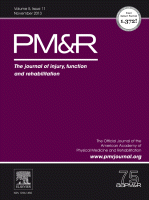Movement and You:
1) Support Patients with Lymphedema and Breast Cancer Related Lymphedema.
All proceeds go toward assisting these patients with their care and supplies.
2) Cancer Prevention:
- Inactivity is strongly correlated to Cancer Risk.
- Movement prevents cancers.
- Common Side effects of cancer treatment are alleviated with exercise.
In the 2008 Journal of Clinical Oncology, women walking briskly 2-3 hours per week in the year prior to developing breast cancer were 31% less likely to die from the cancer than the sedentary women. Also, those women who increased their activity after diagnosis lowered their risk of death by 45%. Conversely, those decreasing their activity upon diagnosis increased their risk of death four-fold.
3) Enhances Strength and Density of Bones.
- Increases and maintains bone mineral density in older adults.
4) Prevents Diabetes:
- Maintains Normal Blood Sugar
- Improved insulin signaling
5) Improves Heart Health:
- Lowers Blood Pressure
- Lower Resting Heart Rate
- Improves Circulation
- Decrease Body Mass Index
6) Enhances Immunity:
- The strength of your immune system is directly correlated to physical activity.
- Can help prevent respiratory tract viral infections and reduce their duration.
7) Improved Mental Health:
- Improves image of Self
- Improves confidence
- Lowers Stress
- Improves Sleep
Source:
“Lise Alschuler, ND, FABNO, and Karolyn A. Gazella”
Peapod Purse
A Lymphedema Charitable Organization
5K Walk in Support of Lymphedema Awareness and Treatment
WHEN? Saturday March 28th, 2015 8am Registration/ 9am Start Time
WHAT? A 5K walk at the Manalapan Recreation Center
WHERE? Located at 120 County Road 522 in Manalapan, NJ
WHY? To support Lymphedema Awareness & Treatment
WHO? You!
For More Information or To Sign up Visit:




